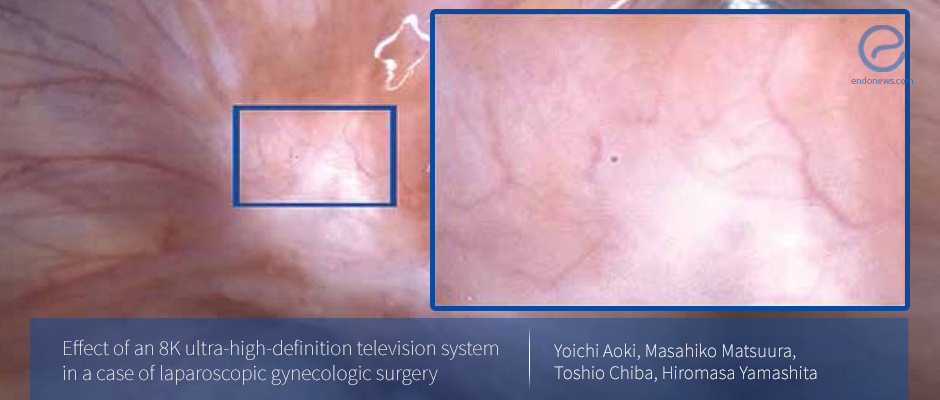Picture This: 8K UHD Television System for Endometriosis Surgery
Apr 19, 2018
Improved surgical efficiency and diagnostic accuracy resulting from better image resolution
Key Points
Highlights:
- Health care providers developed an 8K ultra-high-definition television system during laparoscopic gynecologic surgery for endometriosis.
- The authors compare the new 8K ultra-high-definition television system with a full high-definition (FHD) system.
Importance:
- Improvements in the surgical technology, like recording systems, would allow for more effective and diverse utilization of the technology.
What’s done here?
- An 8K UHD television system was developed and set up. The various parts and capacities of the system are delineated.
Case Study:
-
- A 4-port conventional laparoscopic surgery was conducted on a 46-year-old woman under general anesthesia. The patient suffered from dysmenorrhea. Magnetic resonance imaging revealed ovarian endometrial cysts. The blood tests showed no CA 125 or CA19-9 tumor marker increase.
- The patient underwent Salpingo-oophorectomy for the larger cyst, but the smaller cyst on the other side of the body was addressed using laparoscopic cystectomy.
- There were a primary surgeon and two assistants. The second assistant was responsible for controlling the imaging instrument.
- The imaging technology revealed small vessels on the surface of white lesions that are usually associated with endometriosis. White tissue, but no vessels, were visible in the FHD images.
- The total surgery took 59 minutes, the blood loss was approximately 5 ml, and the specimens were 27 g. The healthcare provider was able to stage the disease and diagnose it as stage 4 bilateral ovarian endometriomas.
Key results:
- The 8K UHD system display has four times the pixels of the full-high-definition system and requires a recording medium of more capacity and magnify an image without adversely impacting the picture quality.
- This new system is thought to improve live imaging during surgery and after surgery for postoperative analysis. A better image quality is associated with an enhancement in surgical skills.
Limitations of the study:
- The study only compared 8K and FHD images, but the authors hope for additional cases that will allow them to compare a myriad of available systems.
Lay Summary
This case report by Aoki et al. was published in the journal "Videosurgery and Other Miniinvasive Techniques" under the title “Effect of an 8K ultra-high-definition television system in a case of laparoscopic gynecologic surgery.” In this publication, the authors delineated a case study they hoped would highlight the benefits of using an 8K ultra-high-definition television system. In this particular case, the new system was used during a laparoscopic gynecologic surgery for endometriosis, and the results were compared with that yielded from a full high-definition system.
The authors devoted a section of the publication to describe the 8K ultra-high-definition (UHD) television system and its set up. This section highlights the various parts of the system and its capacities. The next chapter is all about the case study. The system was used on a 46-year-old woman suffering from dysmenorrhea. The 8K UHD images revealed small vessels atop whitish lesions, which are characteristic of endometriosis. The FHD images did not yield as much detail.
Overall, the images from the 8K UHD system were of better quality than the FHD system and allowed for higher diagnostic accuracy. The 8K UHD system also has better live imaging and may be used during and after surgery. It is even thought to improve surgical skills. Overall, the authors of this paper believe that the 8K UHD systems are under-utilized and could be an asset to the field of gynecologic surgery.
Research Source: https://www.ncbi.nlm.nih.gov/pubmed/29062456
endometriosis high-definition television system full high-definition system laparoscopy surgery

